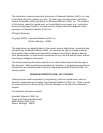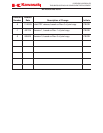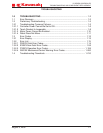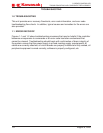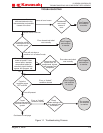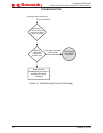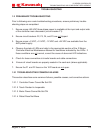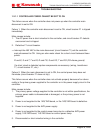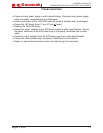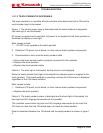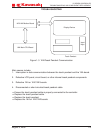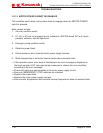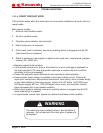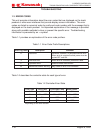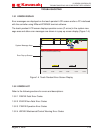
TROUBLESHOOTING
D SERIES CONTROLLER
TROUBLESHOOTING AND COMPONENT REPLACEMENT
1-6 August 9, 2005
K
a
a
aw
s
k
1.2.1.1 CONTROLLER POWER CANNOT BE SET TO ON
This failure occurs when the controller does not power-up when the controller main
disconnect is set to ON.
Failure 1: When the controller main disconnect is set to ON, circuit breaker F1 is tripped
immediately.
Main causes include:
1. The AC power line is short-circuited in the controller, and circuit breaker F1 detects
overcurrent and is tripped.
2. Defective F1 circuit breaker.
⇒
Interrupt the 460 VAC to the main disconnect (circuit breaker F1) set the controller
main disconnect to ON. Using an ohm meter check for a short circuit between these
points:
R and S, S and T, T and R, R and FG, S and FG, T and FG (FG=frame ground)
If a short circuit is detected replace components as necessary (wiring, transformer
T1, circuit breaker F1, etc.).
Failure 2: When the main disconnect is set to ON, the control power lamp does not
illuminate (circuit breaker F1 does not trip).
This failure occurs when the controller does not activate properly because of an abnor-
mality in the primary power supplied to the controller or in the power supply circuit in the
controller.
Main causes include:
1. The primary power voltage supplied to the controller is not within specifications, the
primary power cable is disconnected or damaged, or the primary power is not
supplied.
2. Power is not supplied to the 1KQ/1NR board, or the 1KQ/1NR board is defective.
3. Power is not supplied to the AVR power supply.
4. Power is not supplied to the control power lamp due to a defective AVR power
supply, 1KX/1NR board, 1LS/1NS board or control power lamp.
5. Disconnected or short-circuited wiring in the controller.




